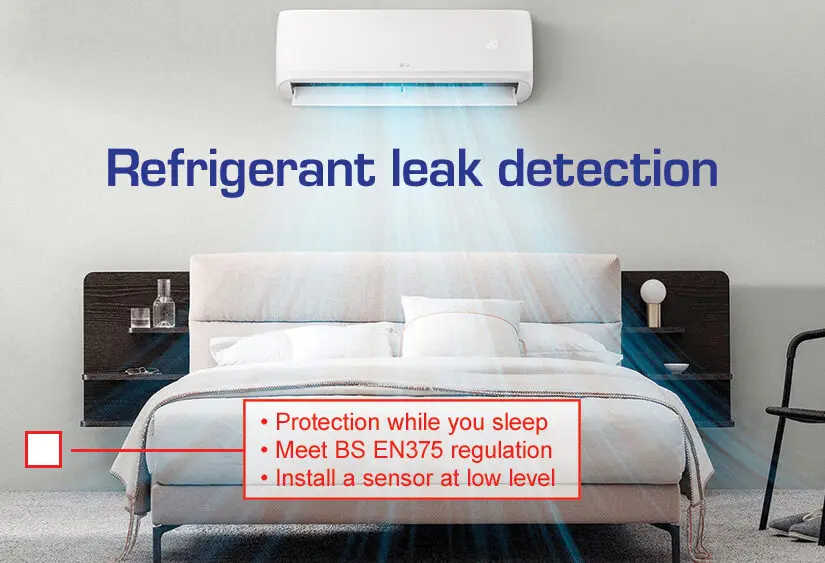You’re right to be concerned…
Refrigerant leaks in VRF/VRV air conditioning systems can pose both health and safety risks, especially in occupied spaces. Here’s what you need to know:
Can you be sure your system hasn’t developed a refrigerant leak?
Not without active monitoring. Refrigerant leaks are often silent, invisible, and odourless, meaning you can’t detect them by smell or sight. Over time, a leak can:
- Impair system performance
- Increase energy costs
- Pose a risk to occupant health (especially in tightly sealed rooms)
- Be hazardous if certain refrigerants displace enough oxygen in the air
Why monitoring is essential:
Modern refrigerants like R-410A or R-32 are generally non-toxic, but in high enough concentrations (like in a small room with a leaking system), they can cause:
- Dizziness, nausea, or suffocation (by displacing oxygen)
- Legal and regulatory non-compliance (e.g. ASHRAE 15, EN378)
What to do:
Install dedicated refrigerant gas leak detectors at strategic points, especially:
- Near indoor fan coil units
- In rooms where a VRF/VRV system is installed
- In confined or sleeping spaces (e.g., hotel rooms)
The good news: New sensor technology is:
- Small enough to fit inside standard electrical back boxes
- Available with aesthetically pleasing faceplates
- Designed to integrate with BMS or standalone alarms
Would you like recommendations on specific refrigerant leak detectors or sensor models that are compact and designed for commercial/residential aesthetics?
If so, please contact us on 01403 216100 or see our sensor designed for this application




